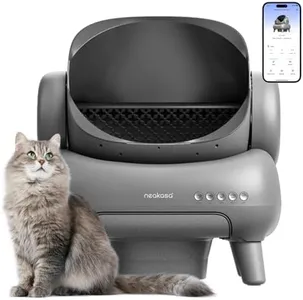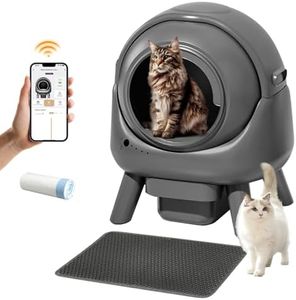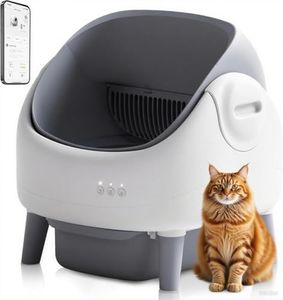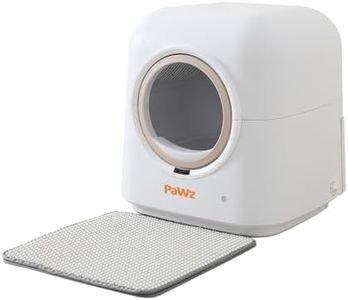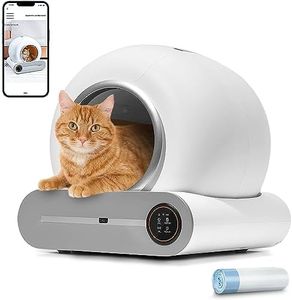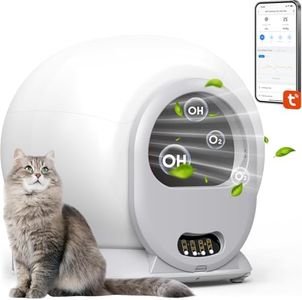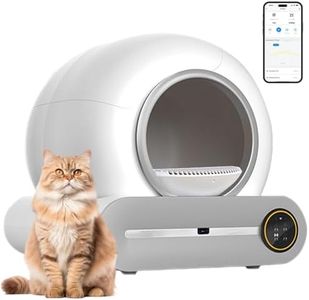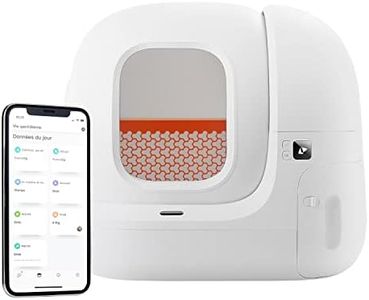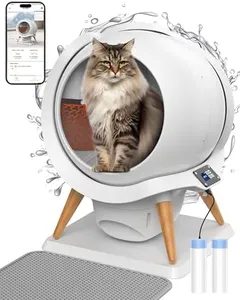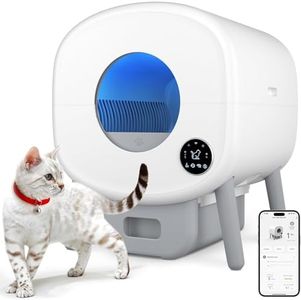We Use CookiesWe use cookies to enhance the security, performance,
functionality and for analytical and promotional activities. By continuing to browse this site you
are agreeing to our privacy policy
10 Best Automatic Litter Boxes
From leading brands and best sellers available on the web.Buying Guide for the Best Automatic Litter Boxes
Choosing an automatic litter box can make life much easier for cat owners by reducing the time and effort needed for cleaning up after your pet. These devices automatically separate waste from clean litter and can help control odors, making them a convenient addition to your household. When picking an automatic litter box, you should consider several key specifications to ensure you find a model that fits your pet's needs and your personal preferences.Size and Entryway DesignThe size and entryway design determine how comfortable your cat will be using the litter box and whether it will fit well in your space. Sizes may range from compact models for smaller cats or tight spaces to larger ones for bigger breeds or multiple cats. Entryways can be front, top, or side, and this affects ease of access for your cat. If you have a kitten, a senior, or a cat with mobility issues, a lower or wider entry is preferable. For multi-cat households or bigger cats, opt for a larger and roomier box with an easily accessible entry.
Waste Disposal MechanismThis refers to how the litter box collects and stores waste after your cat uses it. Some models use paddles or rakes to move waste into a hidden compartment, while others rotate or sift the litter. The importance of this feature lies in hygiene and odor control. Sifting or rotating mechanisms usually provide a more thorough cleaning, but may require specific types of litter. Pick a mechanism that matches your preferences for maintenance and your cat's tolerance for noise and movement.
Litter CompatibilityAutomatic litter boxes may require certain types of litter to function effectively, such as clumping clay, silica crystals, or biodegradable options. Using the right litter is important for effective waste separation and preventing jams. Check whether you want the freedom to choose any litter or are okay with sticking to a recommended type. If your cat is picky or has allergies, this specification will guide your choice.
Odor ControlOdor control relies on features like sealed waste compartments, carbon filters, or deodorizer pouches. This capability is important for keeping your home smelling fresh and making the box more pleasant for your cat. Some models have sealed trays or additional filters, while others rely on frequent cleaning. Consider your sensitivity to odors and how often you want to empty or maintain the waste compartment.
Cleaning and Maintenance RequirementsEven automatic litter boxes need regular cleaning, including emptying the waste compartment and washing components. Some designs are easier to disassemble and clean than others. The importance here is to ensure the box stays sanitary and functions well. If you prefer less frequent or simpler cleaning, look for units with easily removable parts or self-cleaning cycles that handle most of the dirty work.
Noise LevelAutomatic mechanisms can make varying amounts of noise when operating. Loud boxes might frighten sensitive cats or disturb you if placed in a living space or bedroom. Quiet models tend to be better for skittish cats and apartments. Think about your cat’s personality and the location of the litter box in your home to determine how important low noise is to you.
Power SourceSome automatic litter boxes plug into a wall, while others run on batteries. The power source affects placement flexibility and the need for regular battery changes or access to outlets. If you want to place the box far from a plug, battery-powered models offer more options but may need more frequent attention. Choose according to your planned location for the unit.
